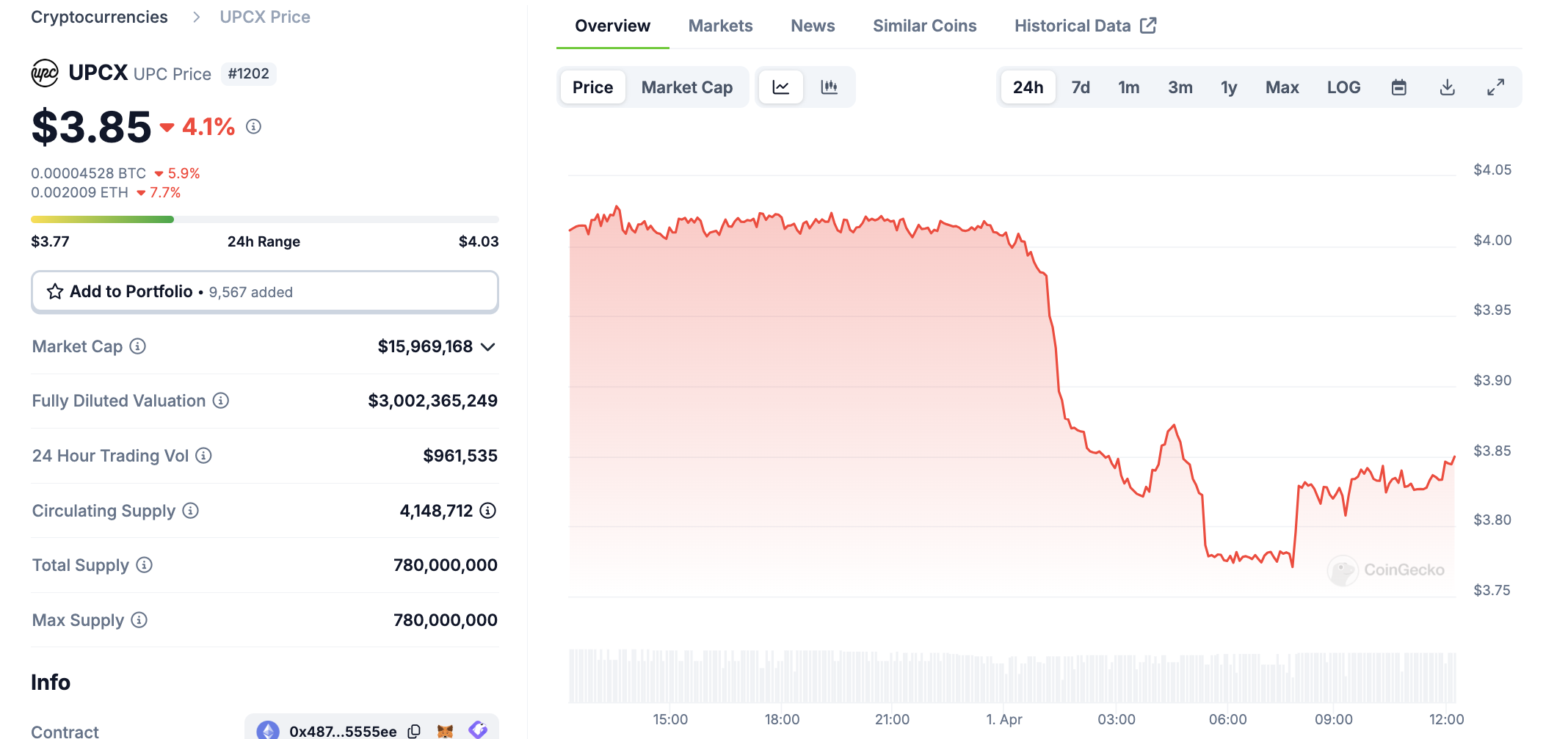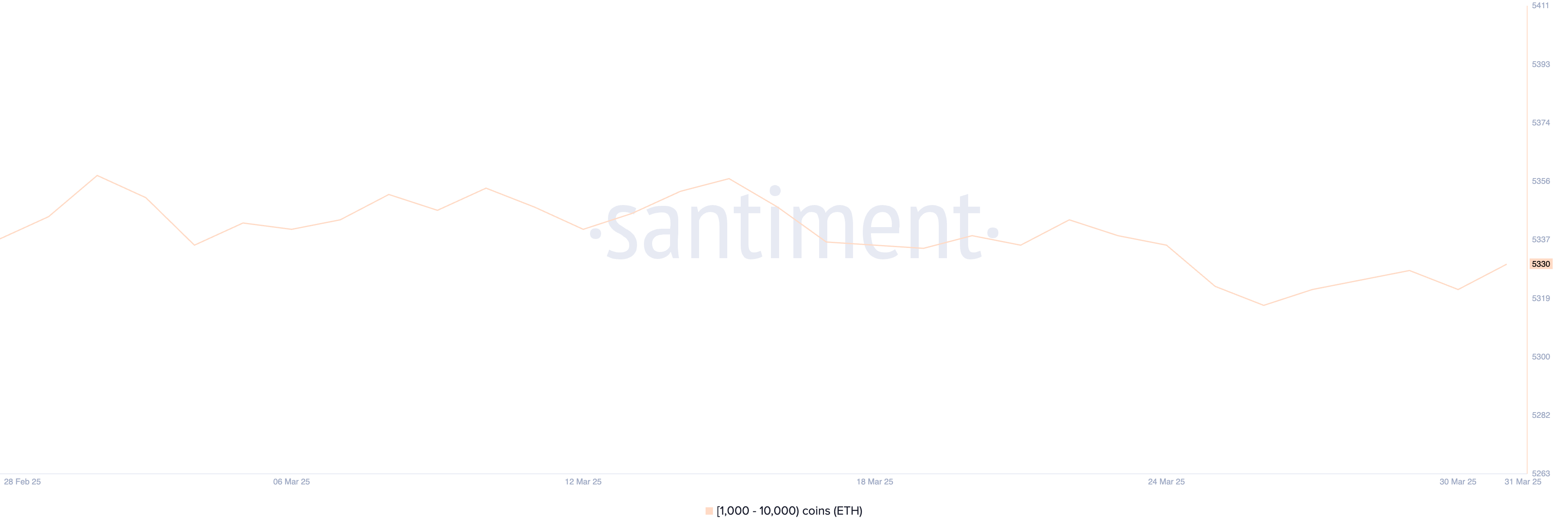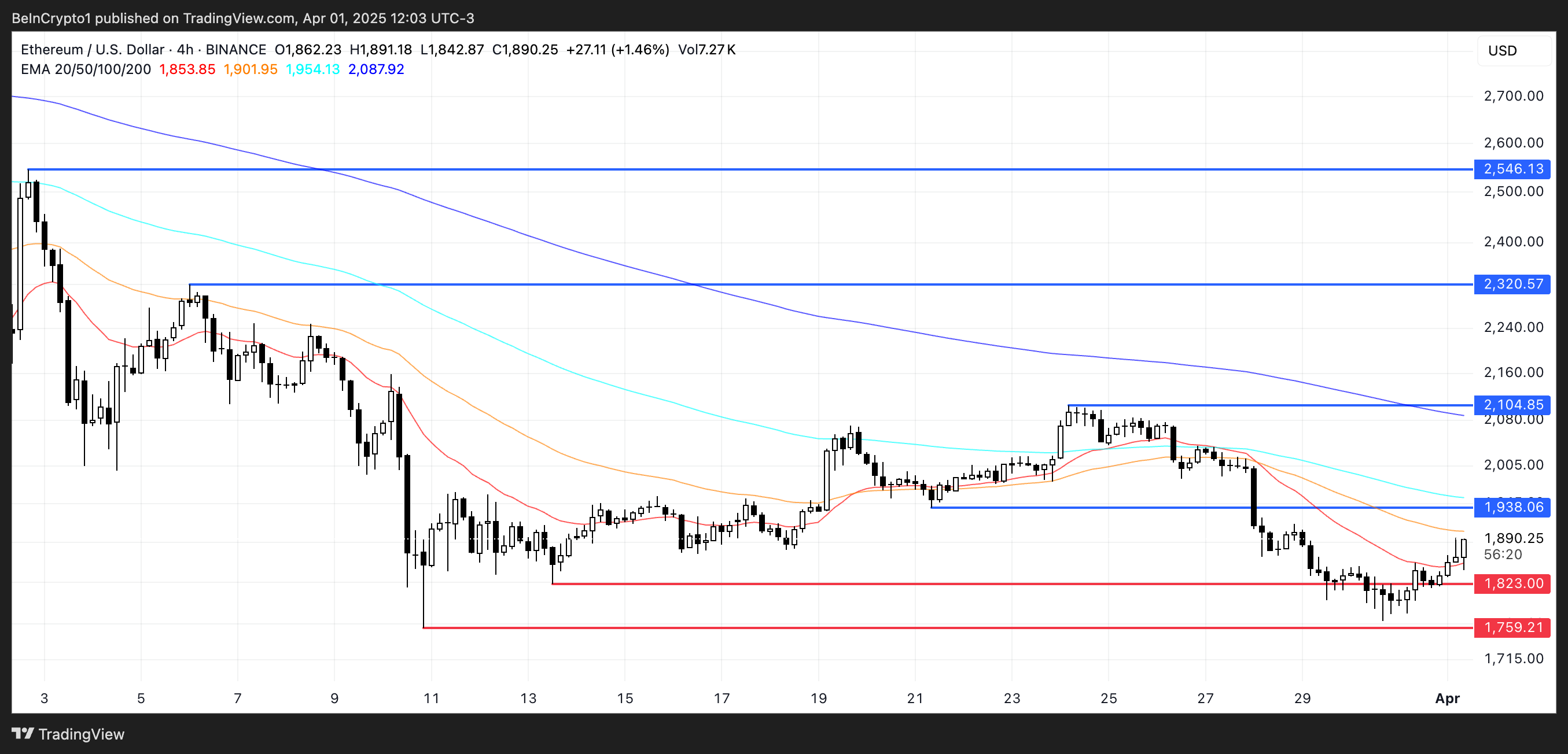Market
Could this new under-$1 cryptocurrency see 100x gains to become the next Solana or Polygon?


Just a few years ago, it would have been difficult to foresee the meteoric rise of projects like Solana (SOL) and Polygon (MATIC). Early investors in these platforms reaped significant profits, thanks to their rapid growth potential and innovative technology. Now, another contender, Rexus Finance (RXS), is stepping into the spotlight, with some analysts highlighting it as a promising altcoin priced at under $1.
Rexas Finance (RXS): The Next Solana or Polygon?
Rexus Finance (RXS), like Solana and Polygon in their early stages, is a project with the potential to tackle some of the most pressing issues in decentralized finance (DeFi), including scalability, efficiency, and cost. Its focus on real world assets puts it front and center in some huge global industries, including real estate and commodities.
Successful Presale Reflects Strong Investor Interest
One of the early indicators of Rexus Finance’s potential is the strong performance of its token presale. Stage 1 of the RXS presale sold out in less than 72 hours, drawing significant interest from both institutional and retail investors. Currently in Stage 2, RXS tokens are now priced at $0.04 each.
The rapid sellout of Stage 1 suggests growing market confidence in Rexus Finance’s vision. Some of the analysts that saw early success with projects like Solana and Polygon are now showing interest in RXS, seeing a similar growth opportunity. For new investors, Rexus Finance presents a unique prospect, with the possibility of substantial upside according to several analyst predictions.
Disrupting DeFi with Advanced Technology
Rexus Finance aims to address key challenges in the DeFi sector, such as high fees, long transaction times, and network congestion. Its scalable infrastructure allows for thousands of transactions per second, making it well-suited for dApps and smart contracts. Additionally, Rexus Finance’s cross-network functionality enhances its competitiveness by allowing decentralized applications to interoperate seamlessly.
This bridge technology, which connects various decentralized applications, could provide Rexus Finance with a critical edge in the future DeFi ecosystem. Its robust infrastructure and ability to integrate different blockchain networks make it a compelling platform for developers and users alike.
A Clear Roadmap for Future Growth
The Rexus Finance team has laid out an ambitious roadmap focused on expansion and innovation. Following the presale, the next key milestone will be the public listing of the RXS token. This will enable full utilization of the token for transactions and development on the platform.
As RXS becomes more widely available, demand is expected to increase as developers deploy smart contracts and build dApps on the network. This increased usage could drive up the utility and, potentially, the value of the RXS token over time, according to some market forecasts.
Could Rexus Finance Be the Next 100x Altcoin?
While the cryptocurrency market is notorious for its unpredictability, some projects have managed to achieve remarkable growth, as seen with Solana and Polygon. Rexus Finance stands out due to its combination of innovative technology and strong investor interest, which could make it a significant player in the market. Several analysts suggest that Rexus Finance has the potential to deliver substantial returns, possibly even 100x growth in the long term, though this still remains speculative at this early stage.
Rexus Finance’s advantages—scalability, transaction speed, low fees, and solid infrastructure—are similar to the factors that fueled the success of its predecessors. With a token price currently well under the $1 level, it presents an attractive entry point for those looking to invest in early-stage blockchain projects.
Conclusion: A Promising Future for Rexus Finance
Rexus Finance (RXS) has demonstrated its potential to make a significant impact in the DeFi space – and its presale is demonstrating that many investors agree with its upside potential.
While predicting future success in the volatile crypto market is always challenging, Rexus Finance’s innovative approach and early market traction suggest that it could become a key player in the industry. Its fast, scalable blockchain and strong presale performance suggest that the project is attracting attention from both developers and investors.
For more information about Rexas Finance (RXS) visit the links below:
Website: https://rexas.com
Whitepaper: https://rexas.com/rexas-whitepaper.pdf
Twitter/X: https://x.com/rexasfinance
Telegram: https://t.me/rexasfinance
Market
Hill Rejects Interest-Bearing Stablecoins Despite Armstrong’s Wish


Representative French Hill, who Chairs the House Committee on Financial Services, rejected requests to approve interest-bearing stablecoins. Coinbase CEO Brian Armstrong made a public appeal in support of this yesterday.
Hill has been a vocal supporter of new stablecoin regulations, and the crypto industry counted his Committee appointment as a victory.
French Hill Rejects Interest-Bearing Stablecoins
If there’s one topic that’s a top priority for US crypto policy, it’d be stablecoin regulations. Significant momentum is building behind pro-industry regulations, and President Trump claimed that stablecoins will play a role in dollar dominance. However, Representative French Hill pushed back on one request, saying he opposes interest-bearing stablecoins:
“I hear the point of view, but I don’t think that there’s consensus among the parties or the Houses [of Congress] on having a dollar-backed payment stablecoin pay interest to the holder of that stablecoin,” Hill told reporters earlier today.
Although Hill portrayed this position on stablecoins as a common-sense viewpoint, it represents a limit to the crypto industry’s political influence. When Hill was chosen to head the House Committee on Financial Services, crypto took it as a big win. Further, he’s been a visible presence in the fight for stablecoin regulation. So, what’s the problem?
Essentially, Coinbase CEO Brian Armstrong made an appeal to Hill and other legislators regarding interest-bearing stablecoins. Just yesterday, Armstrong called this policy a “win-win” and a huge opportunity to help consumers and the economy.
“US stablecoin legislation should allow consumers to earn interest on stablecoins. The government shouldn’t put it’s thumb on the scale to benefit one industry over another. Banks and crypto companies alike should both be allowed to, and incentivized to, share interest with consumers. This is consistent with a free market approach,” Armstrong claimed.
Since Armstrong made this public appeal yesterday, it’s remarkable that Hill rejected his vision of stablecoins so quickly. Ostensibly, Armstrong’s political influence has been on the rise, as he played a prominent role in Trump’s Crypto Summit, and the SEC dropped its suit against Coinbase.
It’s an important fact for the US crypto industry to learn: no matter how quickly its influence is growing, it’s still very new to most people. Earlier this year, a string of state-level Bitcoin Reserve proposals failed in Republican-controlled states. President Trump may support crypto, but his supporters have limits.
Disclaimer
In adherence to the Trust Project guidelines, BeInCrypto is committed to unbiased, transparent reporting. This news article aims to provide accurate, timely information. However, readers are advised to verify facts independently and consult with a professional before making any decisions based on this content. Please note that our Terms and Conditions, Privacy Policy, and Disclaimers have been updated.
Market
How Did UPCX Lose $70 Million in a UPC Hack?

UPCX suffered a major hack today, with 18.4 million UPC tokens stolen from its management accounts. This amounts to about $70 million dollars, and the price of UPC fell drastically.
The hackers stole more UPC than is currently circulating in the markets and haven’t offloaded any assets yet. It is unclear who did this or how they will be able to secure their gains in other assets.
UPCX Suffers Major Hack
Cyvers, a crypto security firm that has tracked and uncovered several major crimes, identified a serious hack this morning. Multiple suspicious transactions took place involving UPCX’s management account, and the firm acknowledged suspicious activity. UPCX didn’t go into great detail, only describing a few security measures, but Cyvers showed the extent of the hack:
“It appears that someone gained access to the address 0x4C….3583E, upgraded the ‘ProxyAdmin’ contract, and executed the ‘withdrawByAdmin’ function, resulting in the transfer of 18.4 million UPC (approximately $70 million) from three different management accounts,” Cyvers claimed via social media.
UPCX is an open-source crypto payment system, and this hack may represent a serious blow to the company. According to CoinGecko data, the hackers stole significantly more UPC tokens than are currently available, which is around 4 million. Naturally, this caused the price to drop significantly, in an immediate drop of over 4%:

Although a $70 million hack will certainly damage UPCX individually, it’s unclear if it will actually impact the broader market much. The largest hack in crypto history took place a little over a month ago, and the community is still assessing the fallout. Meanwhile, UPCX is comparatively tiny; less than 10,000 X users viewed its post admitting to the security breach.
Since the UPCX hack took place, the recipient account hasn’t moved any of its UPC tokens. Indeed, it may be difficult for the perpetrator to convert these assets into usable fiat in the first place. If the hackers stole nearly 5x the amount of UPC tokens in circulation, any attempt to liquidate them will crash UPC’s token price even further.
Ultimately, the UPCX hack is strange for several reasons. Despite a large dollar amount, it hasn’t attracted a huge amount of buzz or impacted the market outside UPC. Hopefully, further analysis will identify the perpetrators, and possibly freeze the assets. Otherwise, the threat of a future sale could hamper UPC’s recover for the foreseeable future.
Disclaimer
In adherence to the Trust Project guidelines, BeInCrypto is committed to unbiased, transparent reporting. This news article aims to provide accurate, timely information. However, readers are advised to verify facts independently and consult with a professional before making any decisions based on this content. Please note that our Terms and Conditions, Privacy Policy, and Disclaimers have been updated.
Market
Ethereum Struggles to Break Out as Bear Trend Fades

Ethereum (ETH) enters the week with mixed signals as traders brace for tomorrow’s “Liberation Day” tariff announcement, a potential macro catalyst that could impact risk assets. While the BBTrend indicator remains deeply negative, it’s beginning to ease, hinting at a possible slowdown in bearish momentum.
On-chain data shows a slight uptick in whale accumulation, suggesting cautious optimism from large holders. Meanwhile, Ethereum’s EMA setup shows early signs of a trend reversal, but the price still needs to break key resistance levels to confirm a shift in direction.
ETH BBTrend Is Easing, But Still Very Negative
Ethereum’s BBTrend indicator is currently reading -11.66, slightly improved from -12.54 the day before, but still in negative territory for the second consecutive day.
The Bollinger Band Trend (BBTrend) measures the strength and direction of a trend based on how price interacts with the upper and lower Bollinger Bands.
A positive BBTrend suggests bullish momentum, with the price expanding toward the upper band, while a negative BBTrend indicates bearish momentum, with the price leaning toward the lower band. Typically, a value beyond 10 is considered a strong trend signal, making the current -11.66 reading a sign of continued downside pressure.

The persistent negative BBTrend suggests that Ethereum remains in a short-term bearish phase, with sellers still dominating the price action.
While yesterday’s slight uptick hints at a potential slowing of downward momentum, the indicator remains well below the neutral zone, meaning any reversal is still unconfirmed, despite Ethereum flipping Solana in DEX trading volume for the first time in 6 months.
Traders may interpret this as a warning to stay cautious, especially if ETH continues hugging the lower Bollinger Band. For now, price action remains fragile, and any bounce will need to be supported by a decisive shift in volume and sentiment to signal a meaningful reversal.
Ethereum Whales Are Accumulating Again
The number of Ethereum whales—wallets holding between 1,000 and 10,000 ETH—has ticked up slightly, rising from 5,322 to 5,330 in the past 24 hours.
While this is a modest increase, whale activity remains one of the most closely watched on-chain metrics, as these large holders often influence market direction. Whales’ accumulation can signal growing confidence in Ethereum’s medium—to long-term prospects, especially during periods of price uncertainty or consolidation.
Conversely, a decline in whale addresses typically suggests weakening conviction or profit-taking.

Although the recent uptick is a positive sign, it’s important to note that the current number of Ethereum whales is still below the levels observed in prior weeks.
This means that while some large holders may be re-entering the market, the broader whale cohort has yet to fully commit to an accumulation phase.
If the upward trend in whale numbers continues, it could support a bullish shift in sentiment and price. However, for now, the data points to cautious optimism rather than a decisive reversal.
Will Ethereum Break Above $2,100 Soon?
Ethereum’s EMA lines are showing early signs of a potential trend reversal, with price action attempting to break above key short-term averages.
If Ethereum price can push through the resistance at $1,938, it may signal the start of a broader recovery, potentially targeting the next resistance levels at $2,104, and if momentum builds—especially with supportive macro catalysts—increasing toward $2,320 and even $2,546.

On the flip side, if Ethereum fails to maintain its upward push and bearish momentum resumes, the focus will shift back to downside levels.
The first key support sits at $1,823; a break below that could expose Ethereum to further losses toward $1,759.
Disclaimer
In line with the Trust Project guidelines, this price analysis article is for informational purposes only and should not be considered financial or investment advice. BeInCrypto is committed to accurate, unbiased reporting, but market conditions are subject to change without notice. Always conduct your own research and consult with a professional before making any financial decisions. Please note that our Terms and Conditions, Privacy Policy, and Disclaimers have been updated.
-

 Market24 hours ago
Market24 hours agoBlackRock’s Larry Fink Thinks Crypto Could Harm The Dollar
-

 Market23 hours ago
Market23 hours agoCoinbase Tries to Resume Lawsuit Against the FDIC
-

 Altcoin23 hours ago
Altcoin23 hours agoCharles Hoskinson Reveals How Cardano Will Boost Bitcoin’s Adoption
-

 Market22 hours ago
Market22 hours agoHedera (HBAR) Bears Dominate, HBAR Eyes Key $0.15 Level
-

 Altcoin24 hours ago
Altcoin24 hours agoEthereum Bitcoin Ratio Drops to Record Low, What Next for ETH?
-

 Market21 hours ago
Market21 hours agoThis is Why PumpSwap Brings Pump.fun To the Next Level
-

 Market20 hours ago
Market20 hours agoCardano (ADA) Whales Hit 2-Year Low as Key Support Retested
-

 Bitcoin9 hours ago
Bitcoin9 hours ago$500 Trillion Bitcoin? Saylor’s Bold Prediction Shakes the Market!























